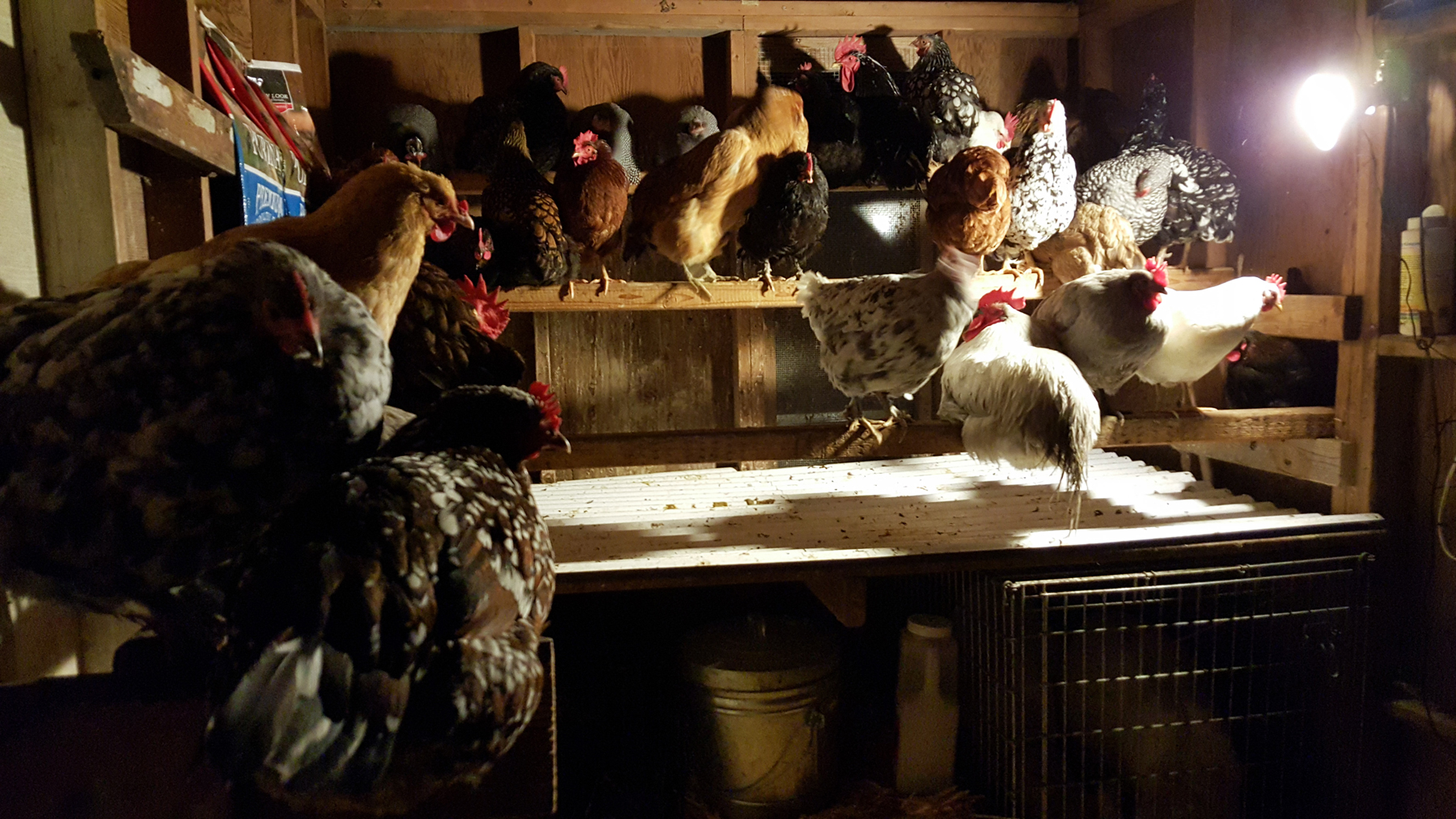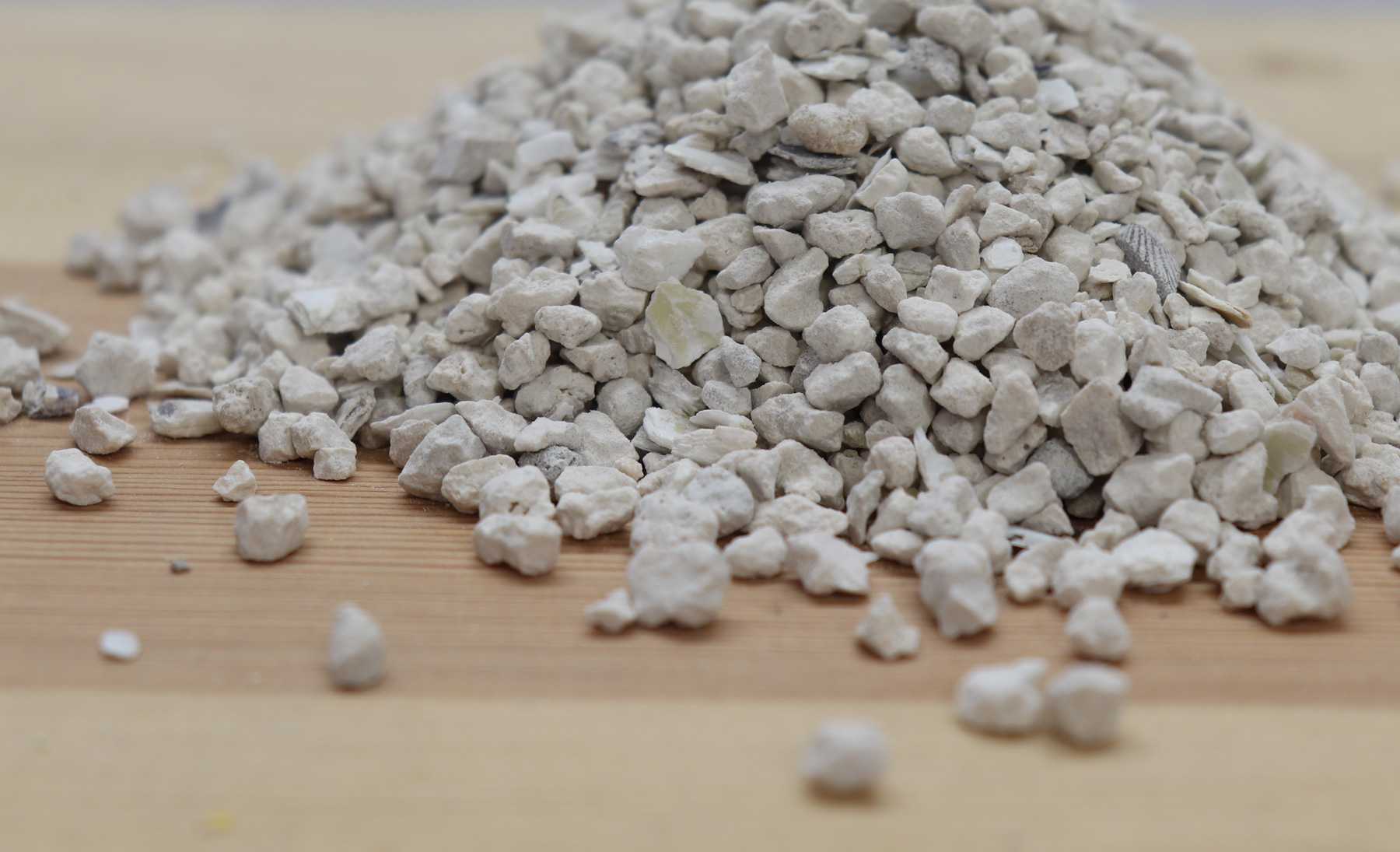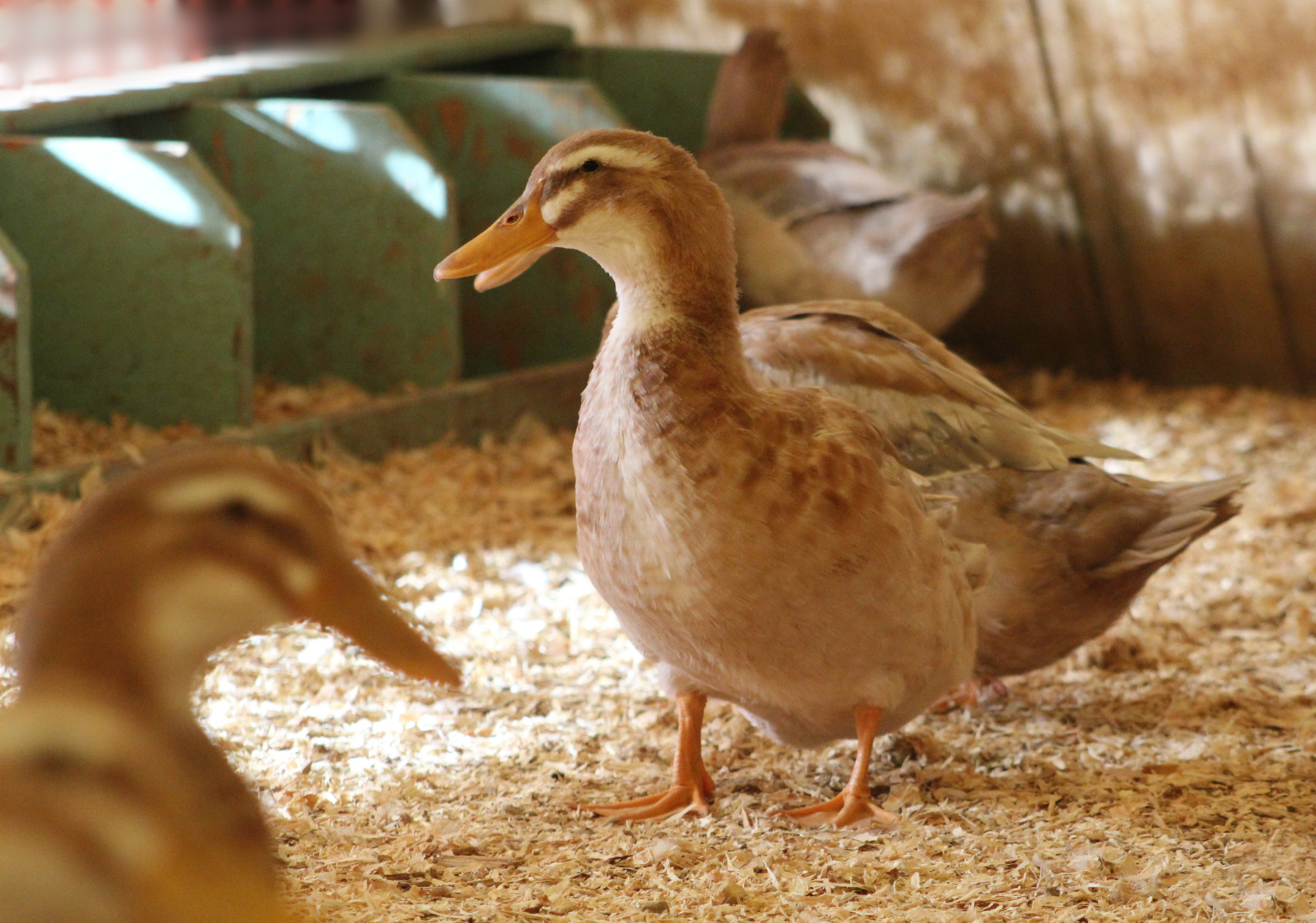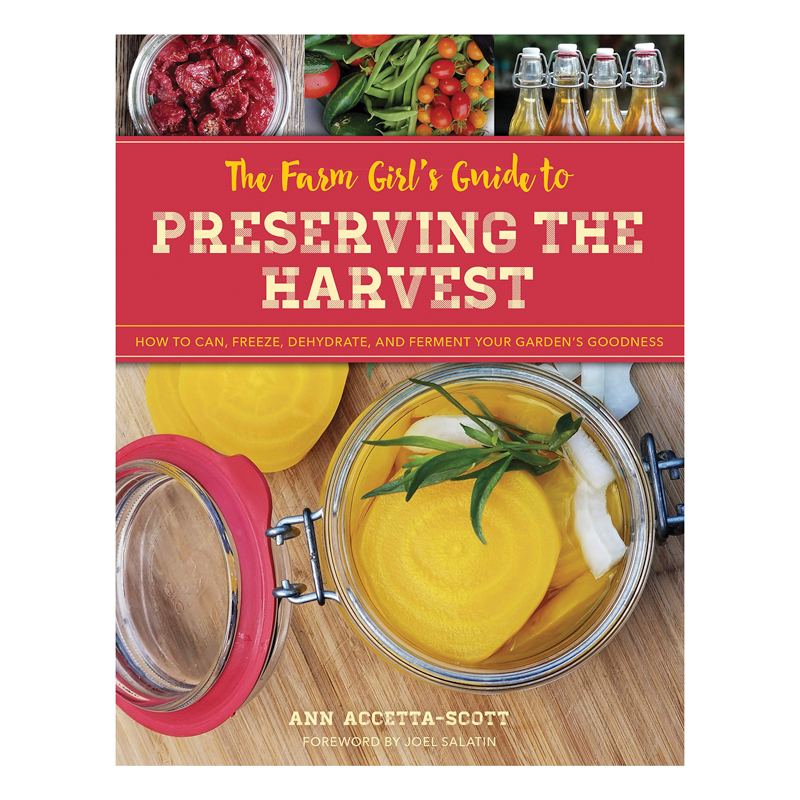Raising chickens with ducks is achievable and ideal for those with limited space. When building a chicken coop make sure to plan the space accordingly for both species. Also, chickens and ducks can consume the same type of poultry feed, herbs, and natural supplements.
For some, raising ducks in the same coop as chickens is not practical. In truth, having separate coops to house different breeds and species may be easier, especially if the required needs are different.
However, in the homesteading world this is not always achievable. Does it make raising chickens with ducks wrong? Absolutely not! One simply has to think outside of the box when raising poultry together.
Brooding Chicks and Ducklings
There is a short period of time when raising different poultry species requires separate housing, and that is during the brooding process. Ducklings and chicks have different needs in order to help them thrive.
Feed Option
During this period of life chicks and ducklings do not consume the same type of poultry feed. Because of how much, and how quickly, ducklings consume feed, they are never to be offered medicated feed. Consuming too much Amprolium during a short period of time is toxic to ducklings.
Instead, offer a non-medicated chick feed to the ducklings. In addition, add a non-medicated feed Brewer’s Yeast should be given to prevent Niacin deficiency. Add 1 ½ scoops of Brewer’s Yeast to 1-cup of non-medicated chick feed daily.
Brooder Temperature
The temperature within the brooder is different for each species. Chicks require the temperature in the brooder to begin at 95 degrees Fahrenheit, whereas ducklings need the brooder to maintain 85 to 90 degrees Fahrenheit. Keep in mind, the temperature for both species will need to be decreased weekly. This will continue until the brooder temperature matches the temperature outdoors, or when the chicks and ducklings have fully feathered.
Brooder Bedding
And let’s not forget the fact that ducklings make an extreme amount of mess within the brooder. Ducklings enjoy splashing in their waterer, soaking the bedding. Slippery bedding causes chicks to become unstable, even causing harm or spraddle legs.
Read more about brooding chicks and ducklings in these detailed articles:
Building a Chicken Coop fit for Ducks
Building a chicken coop, or duck house from scratch, is not necessary for raising poultry. Instead, transform an existing structure to contain the necessary requirements. Below you will find the tips for establishing a coop to house both chickens and ducks.
Poultry Coop
Whether you are building a chicken coop or renovating an existing one, raising ducks, as well as, raising chickens in the same space is practical. Especially since chickens roost high and ducks will nest on the coop floor.
To prevent the ducks from getting chicken droppings on them, place a removable drop pan under the roosting bar. A white plastic panel found at many home improvement stores work quite well as a drop pan. The use of a drop pan will help to identify poultry illnesses quicker and will announce molting prior to feathers dropping.
The drop pan will need to be cleaned on a daily basis.

The choice of bedding I prefer for raising ducks is straw. Not only is straw compostable, it is a carbon, which is perfect for minimizing odor. Simply remove the soiled straw daily, replacing the coop bedding as needed.
One important tip, do not keep water in the poultry coop. Much like a brooder, ducks will make an extreme mess when given the chance to play with water. Like chickens, water fowl can go 8 hours without water.
Because water is not being kept in the coop the feed will need to be picked up nightly. Ducks cannot consume feed without having water available. Waterfowl consume a large amount of feed in a short period of time, often not stopping to swallow. The water is used to help wash the feed down, without it ducks run the risk of choking.
Nesting Boxes
Though not necessary, chicken nesting boxes can be placed off the ground. Hens are capable of flying into the nesting box of choice.
Ducks prefer to lay eggs on the coop floor, but will also lay eggs in the pool or even in the run. With that said, duck can be trained to lay their eggs in nesting boxes.
Set-up a nesting box large enough for ducks on the coop floor, freshening the straw every few days. Ducks tend to lay early in the morning before sunrise. In order to ensure your ducks lay in the coop, do not open the coop until after sunrise.
The Run
I do not think I can say it enough, ducks are extremely messy, whether it’s caused by the splashing of water or because of their watery waste.This makes keeping them in a small run impractical.
In truth, a run is where your poultry will hang out the most. This space will need to be large, no less than 10 square feet per bird. In fact, 15 to 20 square feet per bird is ideal.
It is important that fresh, clean water is always available. A pool provides endless entertainment for your flock but it is not necessary with raising ducks.
Ducks need access to water deep enough for them to:
- Wash their eyes and nostrils throughout the day.
- Activate the oil gland. A duck will use the water to preen, distributing the oil onto feathers.
- Water must be present during feeding.
Poultry Feed – Raising Chickens and Ducks on the Same Feed
Once chickens and ducks have been moved to the poultry coop they can be fed the same type of feed. However, I would strongly advise to continue adding Brewer’s Yeast to the feed to prevent the risk of Niacin deficiency. Niacin deficiency in waterfowl is a concern, and should never be taken lightly.
Continue to add Brewer’s Yeast to feed daily to help minimize the risk of Niacin deficiency from occurring. Brewer’s Yeast is also safe for chickens and other poultry to consume.
Fermented Whole Grain Feed
Hands down, the best poultry feed to offer is fermented whole grains. Raising poultry on fermented whole grains allows for a healthier bird, as well as, a reduction in feed cost.
Learn more about how to ferment whole grains, and why it is beneficial for your poultry flock.

Layer Pellet
Layer pellet is a commercial poultry feed ideal for all birds which are laying. This type of feed is high in calcium, and needed for egg laying hens. In addition, calcium ensures strong bones.
Mash
Mash contains the same ingredients as layer pellet, but has not been made into pellets. This type of feed is ideal for ducks since they consume feed by scooping it. Because chickens naturally peck at the feed it will take them time to figure out how to consume mash.
Oyster Shells
Offer Murray’s Best Oyster Shell as a free choice option. Oyster shells contain calcium and are necessary for laying hens, the birds will consume the shells as needed.

Raising Chickens with Ducks
I’ve found that there is nothing more enjoyable than raising chickens with ducks. As long as there is enough space and feed bowls, there will be harmony in the barnyard. Just as it was when our forefathers raised chickens with ducks.


Photos courtesy of Ann Accetta-Scott and McMurray Hatchery Staff.




